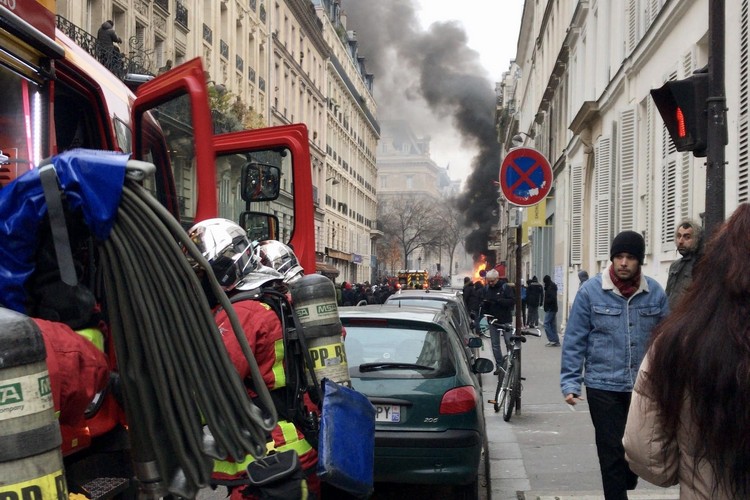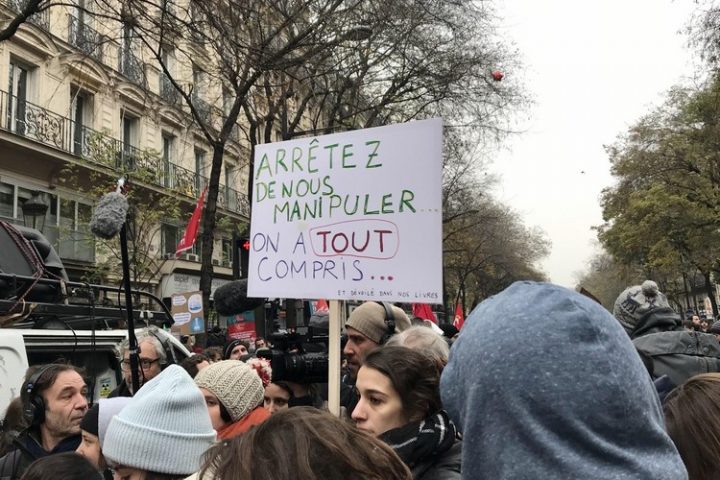Text and photos: Josefina Dowbor-Muśnicka
One year after the peak of the Yellow Vests, the French decided to go to the streets and make themselves heard.
This Thursday, December 5, France experienced the beginning of an unlimited interprofessional strike. According to the CGT union, 1.5 million people demonstrated against the new reform of the pension system, including workers from different public transport companies and education centres (France Info). This has resulted in an almost total freeze on the country’s society. The strikers denounce Macron for wanting to diminish their pension rights, through the installation of a new generalized pension system.
The events of the five were planned for months, and the strike announced weeks ago, but these did not cease to surprise the French people. What’s more, no one seems to know when it will end: In theory, the trade unionists voted to renew the strike until Monday 9th, but at the same time, they also announced that “they would not stop until they had a response from the president. This was said, for example, during the general assemblies organized on Thursday morning.
In the case of Paris, a series of assemblies were organized in different locations in the capital. They were attended by from a few dozen to about two hundred people who voted, among other decisions, the renewal of the strike. In turn, these same people, accompanied by a procession of students from universities such as the Sorbonne, as well as pensioners, families and political organizations, then went to Gare de l’Est, the meeting point of the demonstration. It would last a whole day, despite the almost winter temperatures and the police and military pressure.
Thus, from 1 p.m. to 8:30 p.m., forty thousand five hundred demonstrators gathered in the streets of the French capital (Le Parisien). However, the tranquillity did not last long because, moments later, a series of demonstrators caused the fire of a building near Piazza della Repubblica. This increased the repression of the security forces, which totally cut off the Parisians, preventing them from continuing their journey. However, the latter did not give up and progressively managed to reach the final point of the demonstration, north of the city. However, this caused the event to last until late into the night.

At the same time, the demonstrators were heavily attacked by tear gas and at least ninety interpellations were made, counting Paris alone. According to the different French media, it also seems that there were great tensions in other cities, such as Toulouse, Bordeaux and Nantes.
According to the testimony of a student at Descartes University, the students, many no older than nineteen, lived “in great fear during the protest”, especially from four o’clock in the afternoon, when the security forces began to round them up and throw tear gas at them, as they tried to advance in what was supposed to be a declared and, therefore, legal demonstration.
Conflicts were even seen between the firefighters trying to put out the fire and the National Police, since the latter seem to have behaved violently against the former and against the people present. At the same time, a procession of Parisian firefighters took part in the event. This group, which led the protest in part, was also involved in several conflicts with the police and six of its participants were arrested. (Le Parisien).
On the other hand, this weekend, the situation seems to have calmed down. However, the lack of public transport was even stronger than the five and this Tuesday new demonstrations are expected in the capital, probably just as violent. For the time being, neither Macron nor the strikers seem to give in to their objectives. Once again, the country’s situation is unstable.
Translation Pressenza London






